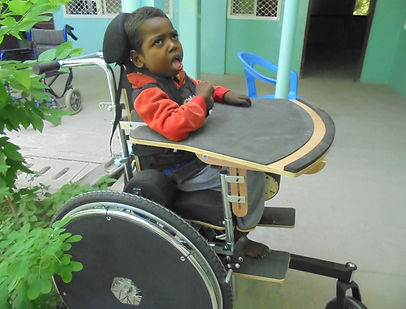Mobility is the first step to access basic rights including access to food, shelter, education, job/income, equal opportunities and equal citizenship. The most important components in the restoration of mobility are assistive devices also known as Assistive Technologoies (AT) such as prostheses, orthoses, wheelchairs and walking aids. Wheelchairs, Prosthetic and orthotic services play a major role in enabling a person with a disability to change from being immobile to becoming mobile, a passive receiver to an active contributor, and isolation to inclusion. They also help to provide further means towards equality by helping a child with disability to go to school or an adult with disability to go for skills training or income generation activities (WHO, 2005).
Common examples of mobility devices that are available at DAN include prostheses such as artificial legs., orthoses such as callipers, braces and splints, crutches, walking frames, wheeled walkers, wheelchairs (manual and powered), tricycles, scooters, orthopedic shoes (orthopedic foot-wear). DAN happens to provide mobility devices such as white canes which are also considered as mobility devices, as they assist people with visual impairments to move independently within their homes and communities. We also delivered eyeglasses and hearing aids to our service users in Somaliland.
Mobility devices are appropriate for people who experience mobility difficulties as a result of a broad range of health conditions and impairments, including amputation, arthritis, cerebral palsy, poliomyelitis, muscular dystrophy, spinal-cord injury, spina bifida, stroke and visual impairment. They are also relevant for older people who experience mobility difficulties. Mobility devices reduce the time and physical burden for caregivers (Allen et al., 2006). Mobility devices may also have an impact on the prevention of falls, injuries, further impairments and premature death. Investment in provision of mobility devices can reduce health-care costs and economic vulnerability, and increase productivity and quality of life (SIAT, 2005). Below are samples of mobility devices, produced at DAN's workshops, in pics:



Orthopedic Workshop Activity




Wheelchairs

Crutches

Prosthetic Products

Orthopedic Shoes

Chairs for Children

Artificial Limbs

Production

Orthotic Products

_edited.jpg)


The Process of Prosthetic Production








































































